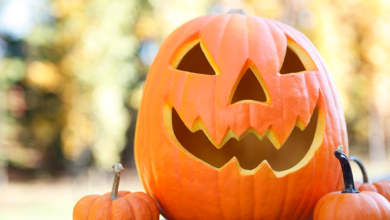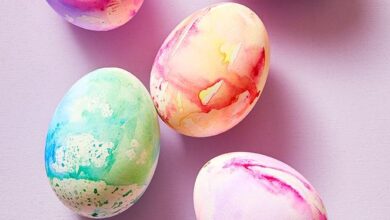The Traditions Symbols & History Behind the Celebration

[ad_1]
The annual Kwanzaa traditions that Dele Lowman celebrated with her mom, brothers and surrounding community in Pittsburg, Pennsylvania, were the highlight of her childhood. “One of the things my family would do is write out African Proverbs in calligraphy on nice paper, that my mom would have me decorate them,” she says. “We would roll them up like scrolls and tie them with ribbon and everybody would pick one.”
For two consecutive years, Dele randomly picked the proverb that says “He who knows he has enough is rich,” a truth she says her mother gleefully reminded her throughout the years.
Observed annually between December 26 and January 1, Kwanzaa is a Pan-African cultural celebration and holiday designed to support the social, cultural and economic fabric of the African American community in the U.S. by strengthening its connection to African culture. Dr. Huberta Jackson-Lowman, retired professor of Psychology at Florida A&M University, says that Kwanzaa “emphasizes our connection to our African history, and not just our experiences in this country.” In addition to implementing Kwanzaa’s principles in her courses, she also instilled them into her daughter, Dele.
Although Kwanzaa traditionally is celebrated by families with African roots, any family can celebrate the spirit of Kwanzaa this holiday season and beyond. Here are the traditions, symbols and principles you need to know about the celebration.
What is the history of Kwanzaa?
Kwanzaa emerged in 1966 after the Watts Riots in Los Angeles. Dr. Maulana Karenga, professor and chairman of Black Studies at California State University, Long Beach, developed the celebration to build solidarity within the African American community and a stronger connection to African history. He founded US, a cultural organization, and crafted Kwanzaa to reflect “first fruits” celebrations found in various countries in Africa.
The word Kwanzaa comes from the phrase “matunda ya kwanza” which means “first fruits” in Swahili.
While Kwanzaa has spread to various countries around the globe including France, England and Brazil, Dr. Karenga’s reputation has remained sullied by an assault charge from the early 1970s. Speaking to Karenga’s past and the celebration of the holiday, Dr. Jackson-Lowman says, “We can appreciate gifts and understand that they come from imperfect people.”
Indeed, the gift of Kwanzaa centers culture and community, and is rich in symbolism.
What are the 7 symbols of Kwanzaa?
The visual focal point of the celebration is Mkeka, a mat that is accentuated with symbols.
- Mkeka, the mat, symbolizes history and tradition that serves as the foundation of the community.
- Mazao, the crops, represent the first fruits that are brought to the community.
- Kikombe cha Umoja, the unity cup, represents the foundational principle of unity.
- Muhindi, the corn, symbolizes children who represent the future. Each ear of corn is meant to represent the number of children in the household. If they are none, at least two are placed on the mat.
- Kinara, the candle holder, represents the African ancestors that uphold the community.
- Zawadi, the gifts, tangibly represent the commitments participants make during the celebration. Children are usually the recipient of the gifts which include a book and a cultural heritage present.
- Mishumaa Saba, the seven candles, represent seven principles that particularly undergird and uplift communities of African descent.
How is Kwanzaa celebrated?
Kwanzaa, according to Dr. Jackson-Lowman, is essentially “coming together to celebrate who we are and passing down our culture to our children.”
Although all Kwanzaa celebrations are filled with food, family and the lighting of the Kinara (candleholder), how communities celebrate the holiday varies. These diverse communal traditions are commonly filled with traditions including African drumming, dancing, inspirational messages, storytelling, learning about heritage, crafts and of course — a feast. Children can get involved with the ceremonial holiday tasks, like lighting the kinara and displaying the symbols on the mkeka.
Kwanzaa is not a religious holiday but a spiritual celebration that celebrates seven principles known as the Nguzo Saba. Each principle is highlighted on one of the seven days of the holiday, and relates to the Mishumaa Saba:
Umoja (Day 1)
On the first day of Kwanzaa, December 26), a child (or adult) lights the black candle in the center of the Kinara on the first day to emphasize Umoja (Unity). Unity is at the heart of community, and this first day of Kwanzaa invites celebrants to “strive for and maintain unity in the family, community, nation and race.” This day stresses that unity is intergenerational and spans continents.
Kujichagulia (Day 2)
Self-Determination, or Kujichagulia, is the focus of the second day of Kwanzaa on December 27. The purpose of Kujichagulia is “to define ourselves, name ourselves, create for ourselves and speak for ourselves.” On this day, the first red candle (to the left of the black candle) is lit.
Ujima (Day 3)
Day three of Kwanzaa focuses on Ujima (Collective Work and Responsibility). Its goal is “to build and maintain our community together and make our brother’s and sister’s problems our problems and to solve them together.” In the spirit of unity, Ujima asks the community to take responsibility for individual members’ obstacles. The community works endlessly for the benefit of all. The first green candle (to the right of the black candle) is lit on this day, December 28.
Ujamaa (Day 4)
Ujamaa (Cooperative Economics) stresses that members of the community must “build and maintain our own stores, shops and other businesses” and “profit from them together.” Building and supporting Black-owned businesses is central to Ujamaa. The second red candle is lit on this day, December 29.
Nia (Day 5)
The fifth day of Kwanzaa, December 30, focuses on Nia (Purpose) in order “to make our collective vocation the building and developing of our community in order to restore our people to their traditional greatness.” Nia emphasizes that having an individual purpose or goal is not enough. Rather, each person must commit to the larger goal of restoring and building up the community. On day five, the second green candle is lit.
Kuumba (Day 6)
Kuumba (Creativity) encourages creativity that serves the collective. Day six asks celebrants “to do always as much as we can, in the way we can, in order to leave our community more beautiful and beneficial than we inherited it.” Kwanzaa itself is an example of Kuumba in action. The third red candle is lit on this day, December 31.
Imani (Day7)
The final green candle is lit on day seven, January 1, and gifts — often handmade — are given. The week-long celebration ends appropriately with Imani (Faith), which is “to believe with all our heart in our people, our parents, our teachers, our leaders and the righteousness and victory of our struggle.”
Faith that she and her community will be victorious despite obstacles is why Dele works tirelessly as a writer and chair of her county’s board of elections, in addition to her full-time job as an executive recruiter.
Dele’s faith was built each year as her mother co-led their community’s Kwanzaa celebrations. Today, she does the same for her nine-year-old daughter. “I feel like I’ve sought to integrate Kwanzaa into every aspect of my life and my daughter’s life, so that it is more than just something we do for a holiday, but really the way we think and live.”
How to celebrate the spirit of Kwanzaa year-round
There are countless ways to celebrate the spirit of Kwanzaa this holiday season and year-round. Here are three simple activities, to start:
- Support arts organizations that practice Kuumba (Creativity). The Lula Washington Dance Theatre and Alvin Ailey American Dance Theater are just two organizations that reflect the dynamism of the African American community. Or if you prefer to support a local arts organization, that’s great as well.
- Practice Ujamaa (Cooperative Economics) by supporting Black-owned businesses. To locate businesses near you, simply conduct a Google search and type the name of your city and “Black owned businesses.” Purchase products and services from these businesses throughout the year.
- Watch the Kwanzaa documentary, The Black Candle, narrated by the late poet Maya Angelou. View it with your family and brainstorm ways you can collectively celebrate the spirit of Kwanzaa year-round.
This content is created and maintained by a third party, and imported onto this page to help users provide their email addresses. You may be able to find more information about this and similar content at piano.io
[ad_2]
Source link






